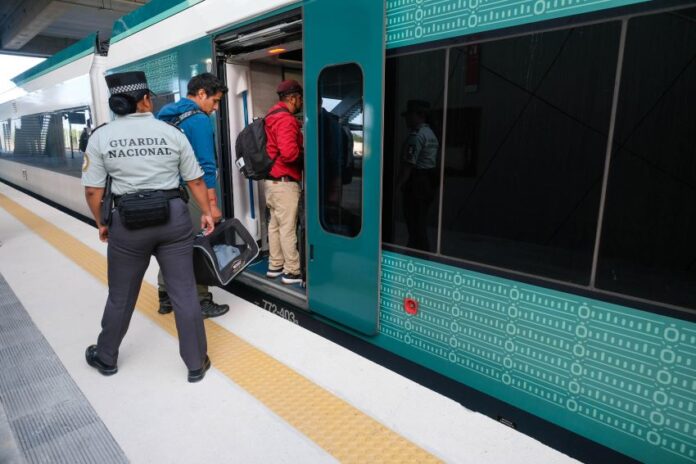The Maya Train has only been fully operational for five months and already questions about its profitability have been raised. The latest doubts come not from the project’s innumerable critics, but from the director of the railway.
Gen. Óscar David Lozano — the general director of the Maya Train — raised eyebrows earlier this month when he admitted to the Mexican Association of Railroads (AMF) that the Maya Train will not turn a profit unless cargo trains are added to the project.

In fact, a day earlier, Lozano had confirmed that the Maya Train operated at a significant loss in 2024. The state-owned railway was US $133 million in the red, bringing in only 275 million pesos (US $14 million) from passengers and souvenir sales. That amount represented a mere 9.6% of revenues needed to break even
Billed as a tourism mega-project, the 1,554-km Maya Train railway was built at a cost of roughly 500 billion pesos (US $24.8 billion), nearly four times more than originally estimated.
On Dec. 15, 2024, President Claudia Sheinbaum inaugurated the final two sections of the train that traverses the Yucatán Peninsula, declaring it fully operational and calling it “one of the great legacies” of her predecessor, Andrés Manuel López Obrador.
Early last month, authorities celebrated the train’s one-millionth passenger, while acknowledging that ridership had been well behind the government’s targeted numbers.
Perhaps not coincidentally, authorities were already contemplating adapting the railway for cargo transport.
In mid-March, Sheinbaum officially announced plans to link the ports of Progreso, Yucatán, and Coatzacoalcos, Veracruz, to stimulate commerce in the region. Trunk lines will connect the ports — both on the Gulf of Mexico side of the peninsula — to the Maya Train tracks.
The government hopes to add 700 kilometers of track to accommodate cargo trains by 2026, citing an initial budget of 38 billion pesos (US $1.98 billion). The goal is for the railway to break even by 2030.
Lozano had qualified his warning about the train’s lack of profitability by telling the AMF that no railroad project in the world can expect to turn a profit by solely relying on passenger service.
Although ridership has been on the rise — up 181% in the first quarter of 2025 compared to the same period in 2024 — the Maya Train was not proving to be the tourist attraction originally envisioned.
The stated goal of the project was to provide transportation for three million tourists each year, a task made more problematic by the lack of connectivity between the train stations and the tourist attractions it purports to serve.
According to official figures cited by El Financiero, only six of every 100 passengers on the train since operations began in December 2023 were foreign tourists.
Data compiled through May 13 indicated that just over 77,000 passengers were foreigners, nearly half of them from the U.S. This factors out to just 149 international tourists each day, a number which pales in comparison to the estimated 20 million foreign visitors that arrived in Cancún last year.
Furthermore, authorities have found that one-fourth of all foreign tourists riding the Maya Train used it exclusively to travel from Mérida to Cancún, a distance of less than one-fifth of the entire length of the rail system.
With reports from El Financiero, Infobae and Yucatán Magazine
